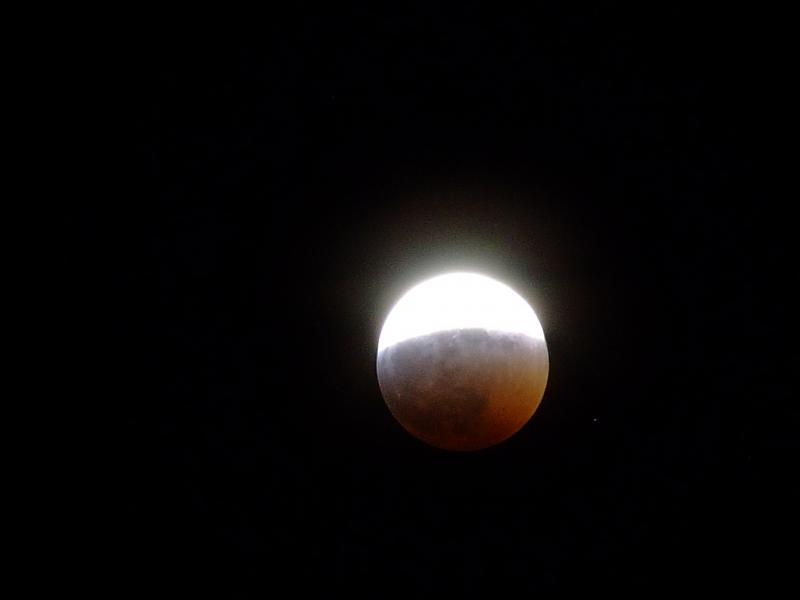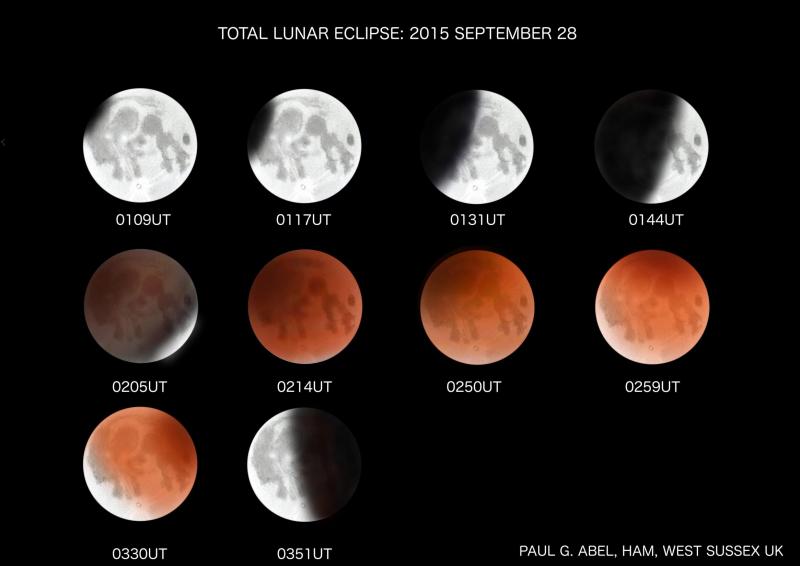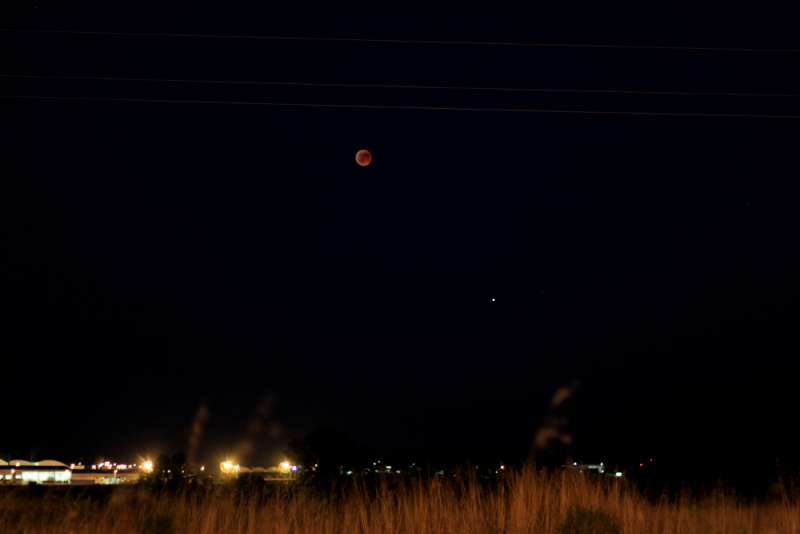2019 January 19
Early morning total eclipse of the Moon this Monday

Eclipses of the Moon occur when the Full Moon passes through the cone of shadow cast by the Earth into space. Weather permitting this will be a fascinating event to watch from the British Isles because the eclipse will be visible in its entirety everywhere, giving plenty of opportunities for stunning pictures of a ‘ghostly red Moon’.
The lunar eclipse begins at 02:36 UT (in the early hours of Monday morning) when the Moon enters the fainter outer part of the Earth’s shadow known as the penumbra. At this time the Moon will be fairly high in the south-west, almost directly below, and in line with, the stars Castor and Pollux in Gemini, the Twins.
The main phase of the eclipse begins at 03:33 UT when the Moon first enters the central, dark part of the Earth’s shadow known as the umbra and the partial eclipse begins. The eclipse becomes total at 04:41 UT and lasts for a full 1 hour 2 minutes. Maximum eclipse is at 05:12 UT. At this time the Moon will be dropping down into the western sky, among the faint stars of Cancer, the Crab, but still high enough to be well clear of trees and buildings.


The partial eclipse ends at 06:50 UT, when the Moon exits the umbra. By this time the Moon will be getting quite low in the west-north-western sky. The faint penumbral phase finally ends at 07:48 UT.
And don’t forget that if you do get up before dawn to watch the lunar eclipse that Venus and Jupiter are still a spectacular sight together in the south-eastern twilight sky, with Venus much the brighter of the pair a few degrees above Jupiter.
Let’s hope for clear skies in the early morning hours of Monday, January 21!
Dr John Mason
Press and Publicity Officer & Meteor Section Direction
If you make any observations of the forth coming eclipse, please submit them to the BAA Lunar Section and upload them to your Member Page. To view other members’ observations of previous eclipses check out the gallery and the eclipse and lunar observations uploaded to the BAA Member Pages..
[Thumbnail image: John Bell, Total Lunar Eclipse, captured 27/09/2015]
https://britastro.org/wp-content/uploads/2019/01/Total_Lunar_Eclipse_Sequence_2015_09_28_PAbel.jpeg
| The British Astronomical Association supports amateur astronomers around the UK and the rest of the world. Find out more about the BAA or join us. |
